|
1917 Carl Zeiss Deinstglas DF 8x24 WWI German army binoculars |
|
My Carl Zeiss Deinstglas DF 8x24 binoculars are WWI German military binoculars “ D.F ” is “Doppel Fernrohrglas”, or Double Telescope. As the war progressed and model 08 non prismatic binoculars were issued to non commissioned officers, binoculars such as these were usually issued to infantry officers. Per Hans Seeger, F.L.S. 65 is an acceptance mark of Fuerwerkslaboratorium Spandau, who took over responsibility for military acceptance of D.F. pattern optical devices in 1908. |

|
Japanese External Reverse Porro Prism Binoculars. WEBSITE MUSEUM |
|
OTHER BINOCULARS #11 & OPTICAL SIGHTS (MOSTLY MILITARY) |
|
1924 Laboratorio di Precisione KL Italian Army 8x26 binoculars #305 |
|
My Italian 8x26 military binoculars with the quite low serial number M305 and 1924 date were part of a small production run for the Italian Army by the Laboratorio di Precisione in Rome, a factory that produced Italian military equipment from sometime before 1906, until their plant was largely destroyed by 1943 Allied bombing. The 100 ° L.D. marking is 100 Lastrina Diastimotrica, which I believe is a measure of angle of view. |
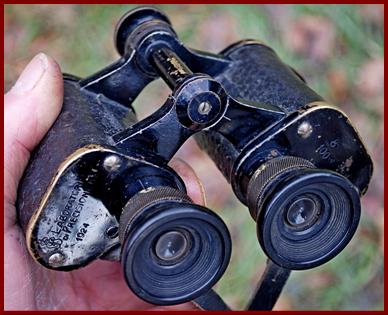



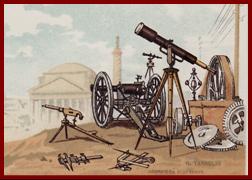
|
L di P logo |

|
1971 NS Polish Army IR Infrared Night Vision military binoculars |
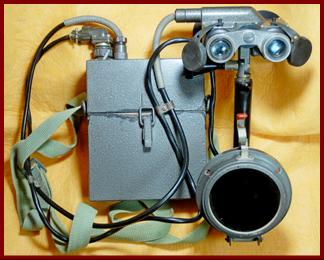

|
My 1971 Polish night vision set combines a hand held IR spotlight with active electronic IR binoculars, and battery box. The same components were more widely used as the Polish Army NS-71IR goggle system that mounted to a helmet. The evolution of optical night vision commenced with using large light gathering objectives, then light transmitting efficiency lens coatings, then electronics age infra red spotlights and active optical detection, and then electronic light intensifiers, and then thermal imaging. All are still used in various combinations or in various applications. |


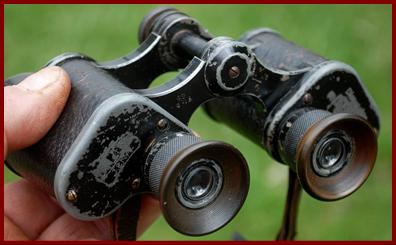

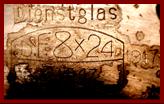
|
Nedinsco Finnish Army M55 SA Suomi Armeija Weapons Sight |
|
My Nedinsco made M55 weapons sight was made for the Finnish 55 S (55mm Sinko Vuodelta) Raikka Oy recoilless rifle system, nicknamed Nyrkka), and is SA / Suomi Armeija/ Finnish Army property marked. This weapons system was developed in the early 1950’s to replace the previously used German Panzerschrek and Panzerfaust anti tank/ bunker man pack weapons, and six were assigned to each motorized infantry battalion. It was phased out in the 1980’s by the M72 LAW and Apilas. With a radically arched trajectory an optical weapons sight was critical to good hit probability. |


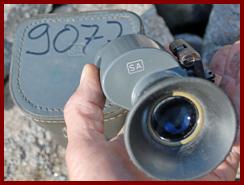



|
WWII bmk (Srb & Stys Fabrik Praiser Messinstrumente) Dienstglas 6x30 German Army binoculars |
|
My WWII 6x30 German dienstglas military binoculars carry the WWII bmk German wartime code of Srb & Sys Fabrik Praiser Messinstrumente of Prague Zechoslovaka, and have a right ocular reticule/ ranging grid. The + marking indicates 1442 cold weather optical grease, and the blue triangle indicates use to -40 ° C (-40 ° F). In the winter due to cold fogging the camera lens; more frequent bad weather, and shorter hours of sunlight, I tend take more photos inside, which then attracts much more Siamese kitty assistance. |
|
FOR GERMAN WWII BINOCULAR and OPTICAL MANUFACTURER CODES |

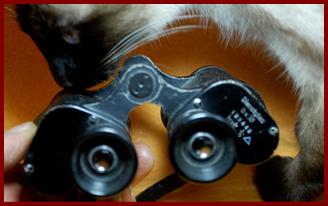
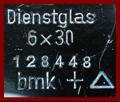
|
1946 Krasnogorsk Mechanical Plant ( Красногорский механический завод, Krasnogorskiy Mechanicheskiy Zavod, KMZ) Russian 6x30 Military binoculars |
|
At the end of WWII most binoculars manufacturers (including those in Russia, the UK, Canada and elsewhere that were essentially government operated) usually assembled the binoculars they could from the piles of wartime parts on hand. I think this is probably the case with my 1946 Russian Krasnogorsk state plant binoculars, which have a leather ocular cover, and do not have a graticule/ ranging grid. The Krasnogorsk factory was created in 1942 near Moscow, and still is in operation, and was known for manufacturing Zenit camera products. The “tomb” logo was used by KMZ during the years 1942-1949. |
|
CMC Paris French Made 8x26 binoculars UK MOD British Military issued marked binoculars |
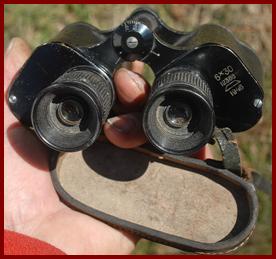




|
1937 Srb n Š tys Praha 6x30 VZ 9/13 Czech Army binoculars |
|
My Czech S rb n Š tys Praha (Prague) 6x30 polni kuk átko (binoculars)military binoculars carry the Czech army insignia. The firm was founded in 1919 as an optics repair and subcontract optic assembler. From 1924 Srb & Štys produced binoculars for the Czech army and military optics for the Turkish, Yugoslav and Greek armies. From 1934 they also produced military optics for the armies of Bulgaria, Denmark, France, India, Portugal and Spain. With the 1938 German occupation the company produced German pattern Dienstglas binoculars like my bmk binoculars. The company was renamed Meopta np Ko š ire in 1945 and this collection also has various Meopta brand military binoculars. Dated 1937. Wikipedia info credit. |
|
1911-1917 Japanese Fujii Bros Patent 6 power Military binoculars |
|
Fujii Brothers of Japan started their Japanese binoculars production in 1911. Fujii Bros production ended in 1917 when they joined Tokyo Keiki Seisaku Sho and Iwaki Glass to form Nippon Kogaku (which later became Nikon), so my binoculars date 1911 to-1917. These binoculars have an anchor marking, which may be an acceptance mark? And many of the markings appear to have been first hand scribed in layout, and then stamped or inscribed more precisely, which I have not seen done previously. That as well as the 2098 serial number reflects quite early production. These were obtained in the USA and probably represent binoculars reused by the Japanese during WWII, and brought home by a US soldier. US soldiers always grabbed all binoculars they could in WWII, and brought or mailed them home. |




|
I cannot decipher the Japanese characters, and hope a viewer can ? miniature.binoculars@gmail.com 翻訳 を手伝ってください |
|
WWII era Hensoldt Wetzlar 6x30 den norske haer Norwegian Army military binoculars |
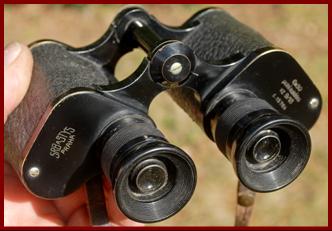



|
Czech lion Army crest |
|
US Frankford Arsenal marked 6x30 military monocular marked Property of United States Air Force |
|
WWII era Busch Solluxon 6x30 SA marked Suomi Armeija/ Finnish Army military binoculars |
|
From early 1918, from the creation of the Finnish state to 1939, and then 1941-1944 the Finnish Army/ Suomi Armeija and Germany had relations that included at times military training, direct combat support, and equipment contracts. My Busch of Rathenow Germany Soluxon 6x30 binoculars are SA (Suomi Armeija) Finnish army property marked. Busch also sold this model of binoculars to the Swedish Army. These binoculars have a leather restraint similar to that used by the German army. The case is also SA marked, and has a special compartment for yellow ocular filters. |

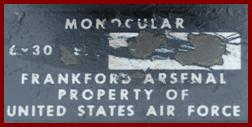
|
Frankford Arsenal was a 20 acre U.S. Army ammo manufacturing facility located in Philadelphia Pa. USA from 1816 to 1917, with as many as 20,000 employees. It expanded it’s range of manufacture to include both optical manufacturing and repair facilities. This 6x30 purpose made monocular was made for the US Air Force, presumably in WWII, and probably for aircraft use, where weight savings was always an issue. |
|
I suspect that my UK MOD broad arrow military property marked French made 8x26 CMC Paris binoculars were originally interwar civilian owned binoculars that were subsequently donated for military use in WWII, as was a common government solicited practice in the UK and USA due to shortages. Many such non standard pattern but useful binoculars were issued in the UK to home guard units, irregular coast watching and aircraft spotting units, and other non first line units. My speculation is partly based on the fairly small electro pencil broad arrow markings and on the similar applied non original “property identification” or serial number. |


|
WWII era British or Canadian No 5 MK IV 7x military monocular |
|
My WWII Era British purpose made monocular is a bit of an oddity. It is essentially the left hand ocular plate and ocular of the standard issue No. 5 Mk. IV military binoculars with standard markings (as made by Ross and NIL) attached to what would be the right hand prism and objective assembly on binoculars. I have seen plenty of binoculars which had one side damaged and were salvaged into monoculars by sawing off the ocular and objective pivot frames, but this is not that. What would be the ocular frame on binoculars on this has is a different factory cast aluminum part with double strap hangers, and likewise what would be the objective frame on binoculars is a factory cast ring and not a modified frame. |

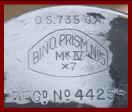
|
Like the Busch binoculars example above, Hensoldt of Wetzlar Germany actively pursued foreign export military WWII needs monopolizing production capacity. The marking Den norsk haer on these binoculars means the Norwegian army in Norwegian. The right ocular has a graticule/ strichtplatte/range grid, and leather ocular cover retained by leather covered spring mechanism similar to case cover straps. |
|
1918 W. Watson & Sons Ltd London & Barnet Sunica Intense private purchase British 8x military binoculars marked “ Made Expressly for Richardson Adie & Co 99 Princess St Edinburgh ” |
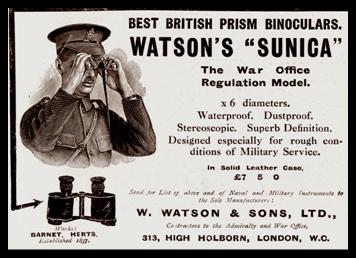
|
My WWI W. Watson & Sons LTD London & Barnet binoculars are an example of applying research to a pair of binoculars. A 1915 ad documents the Sunica model as being a British war department regulation model also sold for officer private purchase in WWI. Research shows the Watson Barnet location existed 1914-1939, and research shows that Richardson Addie & Co of Edinburgh Scotland (Optician and Cutlers) existed 1918-1933. Therefore these binoculars were almost certainly produced in 1918, the last year of the war, and sold in Scotland to an enlisting officer, probably but not necessarily in a Scottish unit. |
|
1915 ad. Grateful educational non commercial use credit to thelothianblogspot.com |
|
I obtained these in Australia. Research shows that after WWI the British government offered free transportation for ex-servicemen to migrate to Australia, and 17,000 did by 1922, including from the depressed Scotland economy of that time. |
|
1916 W. Watson & Sons Ltd. #4 MKIII WWI British army artillery sighting telescope used on the 13 pounder and the 18 pounder quick firing artillery cannons |
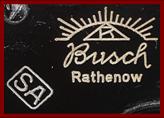
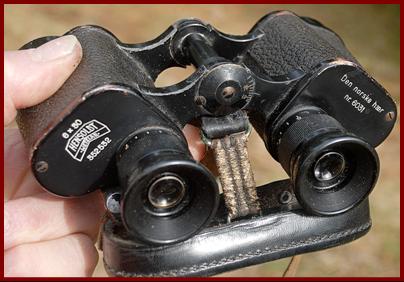


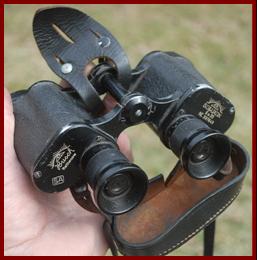

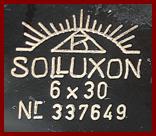

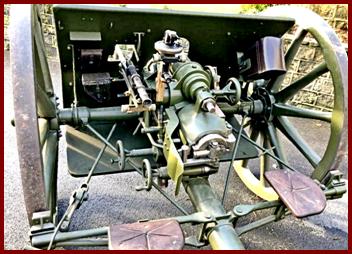

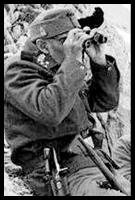

|
Leather ocular cover retained by an odd leather covered spring strap similar to case cover straps. |
|
In WWI W. Watson & Sons was sub contracted to manufacture my #4 MKIII optical sighting telescope that was part of the ROF sighting and elevating mechanism on 13 and 18 pounder quick firing artillery pieces. WWI field artillery optics are usually somewhat uncommon survivors, due to exterior harsh environments of the war fronts and the attrition rate. |
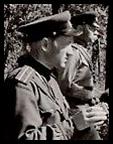
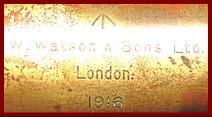


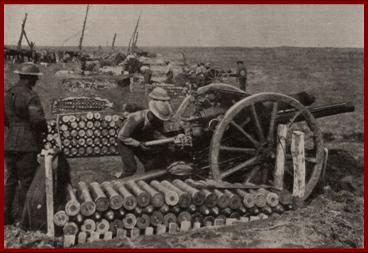
|
Two 1911-1917 Japanese Fujii Bros Tokyo 6 x Military binoculars, with UK Army Property Markings |
|
Japan was an ally of the UK during WWI, and because the UK was scrambling for equipment to equip their hastily staged 1914 mobilization, and since Japan did not have significant mobilization needs in WWI, Japan supplied some military equipment to the UK, including Japanese Arisaka rifles which were issued to some UK troops on a temporary substitute standard basis until Lee Enfield rifle production caught up. Fujii Brothers produced Japanese binoculars from 1911 to 1917. My two Fujii Bros. Tokyo binoculars serial no. 75189 and serial number 75927 have WWI era broad arrow UK British Ministry of Defense broad arrow Army property markings, and the case of the second also has. Some Non standard binoculars used by the British and Australian military and probably other Commonwealth organization used a optics grading, with S.1. being the best. Presumably S.1. optics were as good as standard issue, and might be issued in place of standard issue. Inferior S.3. orS.4. might go to home guard or non combat military use. These don’t have it, but I have also seen non standard WWI & WWII binoculars stamped with the numbering of standard British binoculars (like No.3 Mk1), probably another way of indicating approved substitute usage. I have seen other similar broad arrow Fujii 6x binoculars including serial #75126, so these were a UK govt purchase of available military binoculars. The second binoculars and case are heavily marked to J.A.Gemmell, believed 2nd Lt. J.A. Gemmell in the 2nd Glasgow Highland Light Infantry. |




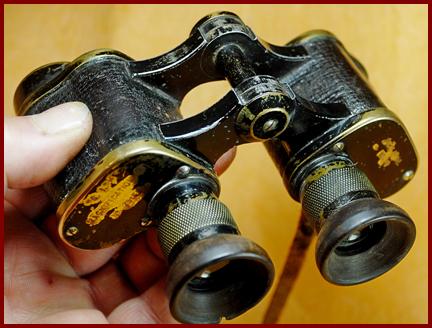

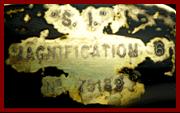


|
Watson Baker Co Ltd. 6x30 No.2 Mk I British military pattern binoculars sold to US civilian market |
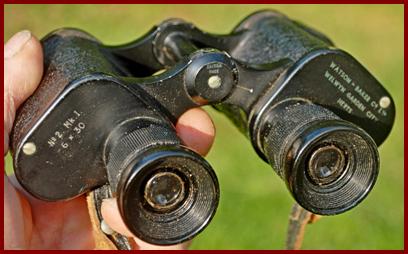

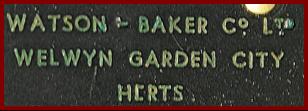

|
My Watson Baker Co. Ltd. No.2 Mk. 1 6x30 binoculars represent British WWII military pattern binoculars produced for export USA or Canadian civilian market right after WWII probably in the last half of the 1940’s, with a war pattern left panel markings and more consumer oriented left panel markings, and export “British Made” markings. |
|
1941 A. K. & S. WWII British army artillery sighting telescope used on 6 pounder anti tank artillery |
|
My British No. 22C MK II 6 pounder anti tank artillery sighting telescope was made in 1941 by A.K.& S, which is noted UK optical manufacturer A. Kershaw & Sons, (founded 1888), who produced various types of UK government military optical instruments in WWI and WWII, and civilian cameras and projectors. This scope may also have been used on some 2 pounder guns and perhaps on some British used 40mm Borfors anti aircraft guns. |


|
6 pounder scope mount |
|
Photo credit Ian Sadler |

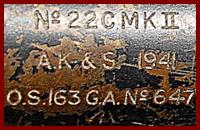
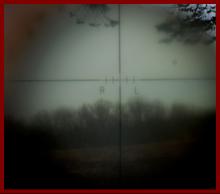
|
UK military broad arrow property marked. |

|
WWI 1917 British Army Charles Baker military monoculars |
|
My WWI 1917 dated Baker British army broad arrow property marked and purpose built monocular was made by Charles Baker, of 244 High Holborn, London, England, who was an optical and scientific maker since 1851 (info credit National Museum of American History) |
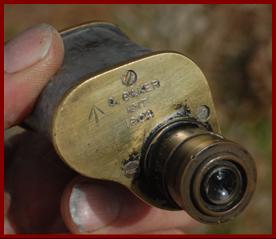
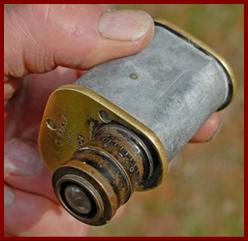
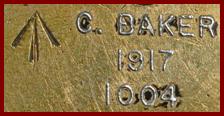
|
See also my Joico Victor binoculars in JAPANESE ORIGINS #6 , produced when Fujii Bros became Nippon Kogaku. |
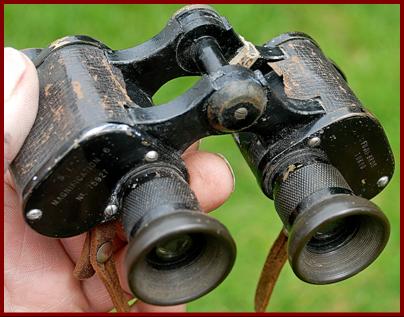
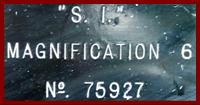

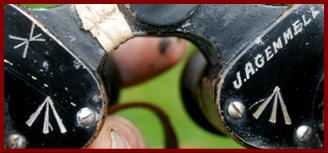


|
NON MINIATURE BINOCULARS & OPTICS: MOSTLY MILITARY |

|
Early or pre WWI W. Watson & Sons Ltd . 6x30 British Military Binoculars |
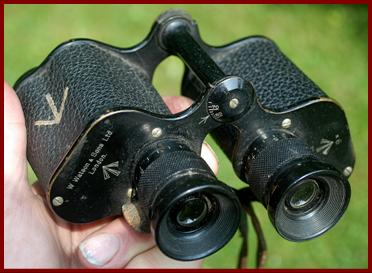
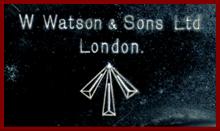
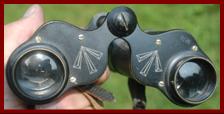

|
Though founded in 1837, the Watson firm became W. Watson & Sons in 1908. My W. Watson & Sons 6x30 binoculars may predate the Aug. 1914 British entry into WWI, or have been made in 1914, based on the following. (1). The elaborate broad arrow usually is assumed as being pre war or very early WWI. (2). By 1915 Watson British military contract binoculars were dated and marked “Binocular Prismatic No.3 Mk1 and had a much smaller and much less elaborate broad arrow MOD property mark, and a dated 1915 Watson 6x30 binocular so marked is observed with serial number 15243. |


|
1945 Kern AARAU Swiss military optical weapon sight |
|
My Swiss military Kern AARAU military optical weapon sight was made in 1945. Founded in 1819, Kern made drawing, geodetic, and scientific instruments, but from around 1926 provided binoculars to the Swiss army (see our pair in OTHER BINOCULARS #2 , and during WWII Kern made several hundred of these 1x anti aircraft gun direct fire optical weapons sights. These are quite unusual in having a rotating drum of 4 reticles (strichtplattes) selectable for factoring the aiming corrections (leading fire) to compensate for differing aircraft speeds (180, 350, 550), plus providing fixed anti tank aiming points. There is a provision for illumination through the dovetail mounting point. These devices are very common on the military market or in optics discussions so I want to express gratitude to Aldo Lardelli of the Kern Study Collection group at the Stadtmuseum Aarau (the museum has 3 examples) for identification and information. The museum website is www.stastmuseum.ch. I do not know which anti aircraft gun this was fitted to, but Switzerland used Oerlikons, Solothern ST-5, and Flak 30 and 38 at the time. |

|
Kern factory in 1944 |

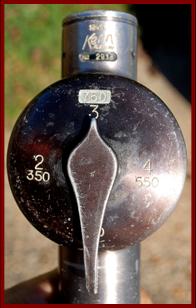
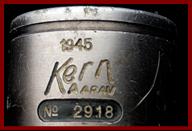

|
MONTHLY NEWLY ADDED ITEMS ARE INSERTED THROUGHOUT THE SECTION AND NOT NECESSARILY ON THE LAST PAGE. Redirected search such as google image may display old content or distortion: try a refresh and or go directly to the site : http//www.miniaturebinoculars.com |
|
1943 San Giorgio Genova Sestri 6x30 R. Esercito Italiano/ Italian Army binoculars with graticule |
The Italian company San Giorgio Societ
à
Anonima Italiana per la Construzione de automobli maritime Terre was formed in 1905, but abandoned auto building and transitioned to making artillery rangefinders and military optics around WWI, continued through WWII, and they became the
Società Anonima Industriale San Giorgio - Genova-Sestri. They
produced my 1943 6x30 binoculars with reticule marked R. Esercito Italiano/ (Regio) Royal Italian army.
|
Società Anonima Industriale San Giorgio, Genova-Sestri, in 1927
|
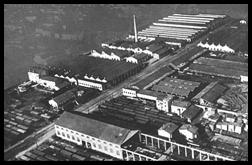
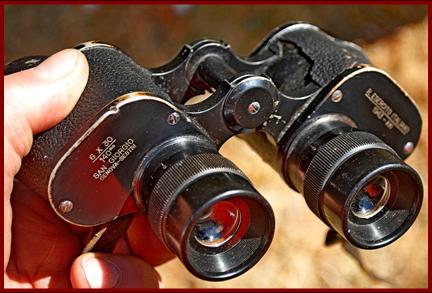



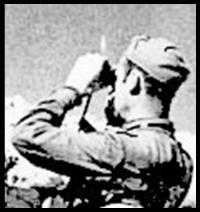

![Text Box: CLICK ON PAGE LINE. CLIQUEZ SUR LA LIGNE DE PAGE. KLICKEN SIE AUF SEITENZEILE. HAGA CLIC EN LÍNEA DE PÁGINA..[ページ行]をクリックします。НАЖМИТЕ НА СТРОКУ СТРАНИЦЫ. ALSO SEE INDEX.](image3473.gif)